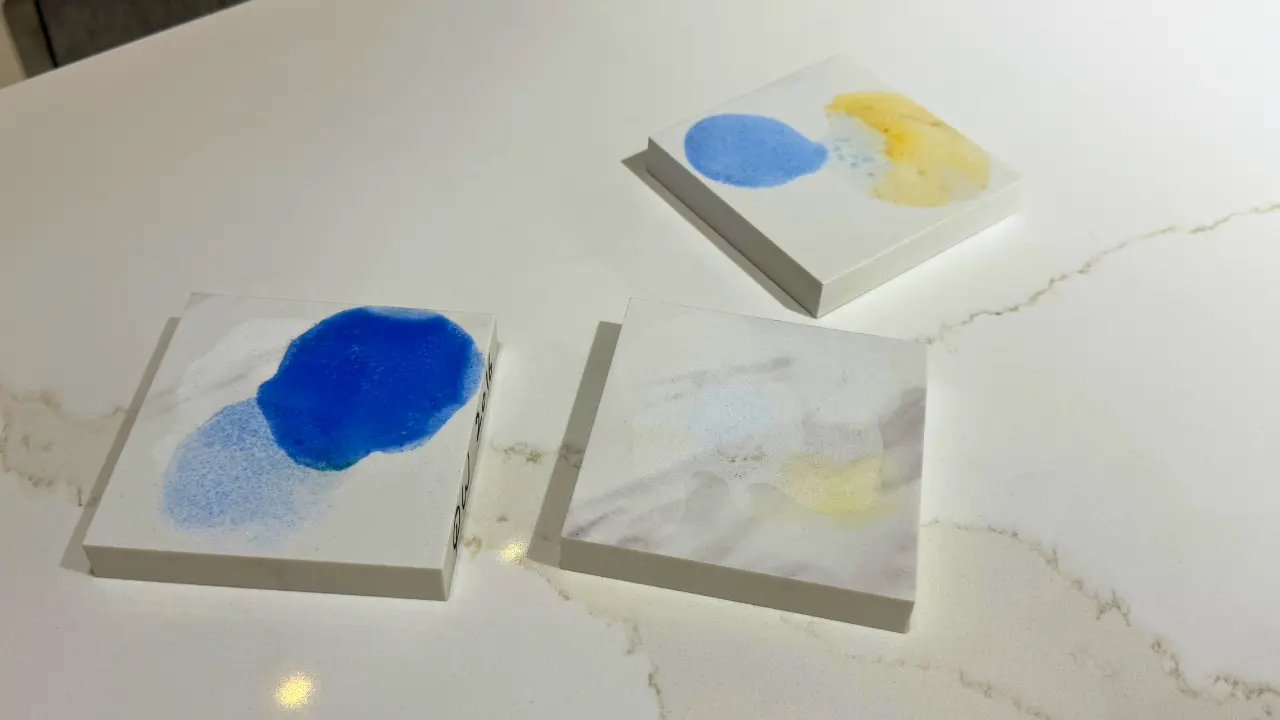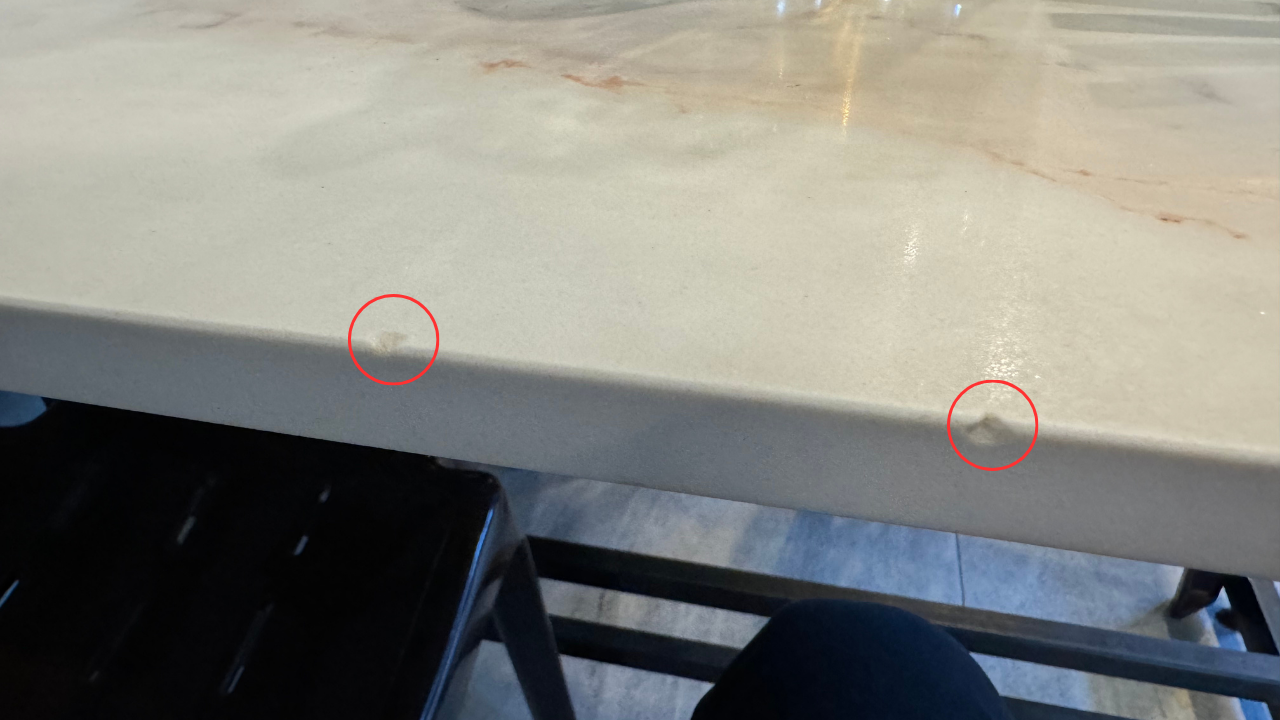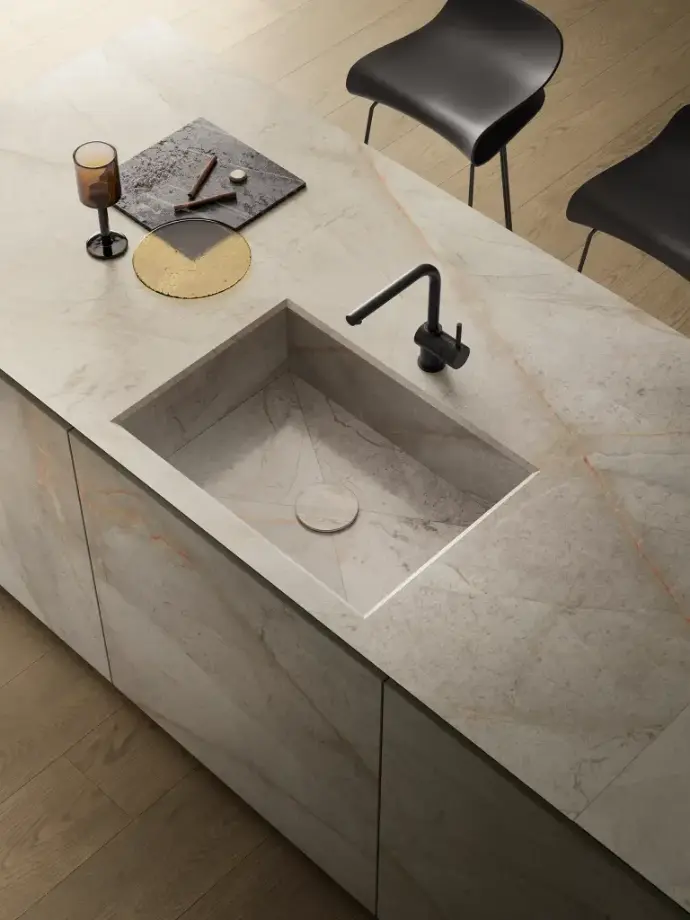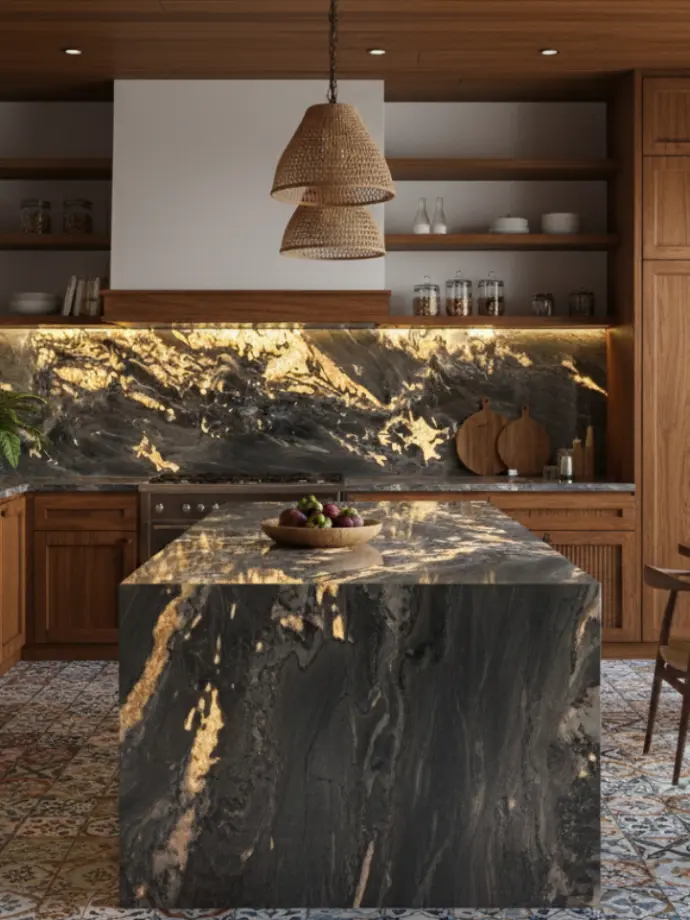Avoid costly mistakes in your kitchen renovation. Learn why compressed marble is a poor choice for countertops and discover better alternatives like quartz and sintered stone.
Introduction
Marble has long been admired for its timeless beauty and luxurious appeal. However, when it comes to kitchen countertops—especially in high-use environments—compressed marble (also known as engineered or reconstituted marble) may not be the best choice. While it offers a marble-like appearance at a lower cost, its performance in the kitchen can fall short in several key areas.
What Is Compressed Marble?
Compressed marble (also known as engineered marble) is made by combining crushed natural marble dust with resin and pigments, then moulding it into slabs. It’s often marketed as a cost-effective alternative to natural marble, with a similar aesthetic.
The crucial detail here is its main ingredient: marble. Marble is made of calcium carbonate, and this is the source of its major weaknesses in a kitchen environment.
It's Sensitive to Acid (Etching)
This is the number one reason to avoid compressed marble in your kitchen. The calcium carbonate in the marble has a chemical reaction with common household acids. This reaction isn't a stain that can be cleaned; it's a permanent corrosion of the surface that leaves a dull, whitish mark. This is called etching.
Think about the ingredients you use every day in your Malaysian kitchen:
- A splash of lime juice (limau nipis)
- A drop of vinegar from your acar
- Tomato sauce for your pasta
- Even coffee or wine
Any of these acidic substances can, and will, leave a permanent dull spot on a compressed marble surface. Your kitchen is an acid minefield, making etching almost unavoidable.
Porosity and Staining Issues
Despite its engineered nature, compressed marble remains porous. This means it can absorb liquids like oil, wine, and acidic sauces—leading to permanent stains and discolouration over time. In a kitchen setting, this is a major drawback.

Susceptibility to Heat and Scratches
Compressed marble is less heat-resistant than natural stone or quartz. It uses resin as a binder. To further reduce the costs, manufacturers often use lower grade resin as a binder, making compressed marble slabs more affordable but less durable and more prone to heat damage and warping.
Placing hot pots or pans directly on the surface can cause burn marks or warping.
The main ingredient in compressed marble is calcite (from the marble), which is a relatively soft mineral (around 3 on the Mohs hardness scale). It’s also prone to scratches and etching, especially when exposed to knives or acidic foods.
Furthermore, while the resin helps reduce porosity, the marble dust itself is still absorbent. Stubborn stains from ingredients like turmeric (kunyit), coffee, or red wine can set into the surface, especially if it has been scratched.
Prone to Chipping
On top of being easy to stain and damage with heat, compressed marble also chips easily. Since it's made with resin and crushed stone, the edges and corners aren’t as tough as quartz stone, so a small hit with a pot or a dropped utensil can knock off little pieces. After a while, these chips can add up, making your countertop look worn out and even weaker.

"But I've Seen It in Hotel Bathrooms and on Floors. Why Not Kitchens?"
This is a common question. Compressed marble is perfectly suitable for less demanding environments like bathroom vanities, flooring, and decorative wall panels. These areas don't face the same daily assault as a kitchen countertop. They aren't exposed to the same range of acids, the high heat from cooking, or the constant abrasion from chopping, dragging pots, and daily meal preparation.
Maintenance Requirements
To maintain its appearance, compressed marble requires:
- Regular sealing with impregnators.
- Gentle cleaning routines to avoid damage.
- Avoidance of harsh chemicals or abrasive pads.
This level of upkeep can be inconvenient for busy households or avid home cooks.
Better Alternatives for Kitchen Use
If you love the look of marble but want durability and ease of maintenance, consider these alternatives:
✅ Quartz
- Mimics marble veining beautifully.
- Non-porous, stain-resistant, and heat-tolerant.
- Requires minimal maintenance.
✅ Sintered Stone
- Ultra-durable and resistant to heat, stains, and scratches.
- Available in marble-like finishes.
- Ideal for high-performance kitchens.
Quartz & Sintered Stone
Check out the catalogue!
Design vs Functionality
While compressed marble may work well in low-traffic areas like bathroom vanities or decorative wall panels, it’s not suited for the rigors of daily kitchen use. Choosing materials that balance beauty with practicality ensures your kitchen remains both stylish and functional.
Conclusion
Compressed marble may seem like a budget-friendly way to achieve a luxurious look, but its limitations in durability, maintenance, and stain resistance make it a poor choice for kitchen countertops. For a better long-term experience, opt for quartz or sintered stone—materials that offer the elegance of marble with the resilience modern kitchens demand.
Choosing a countertop is a long-term investment. By understanding the science behind the materials, you can avoid costly mistakes and select a surface like quartz or sintered stone that will bring you true peace of mind for years to come.
Have more questions? Visit our showroom, and our experts can demonstrate the difference in durability between these materials in person.

